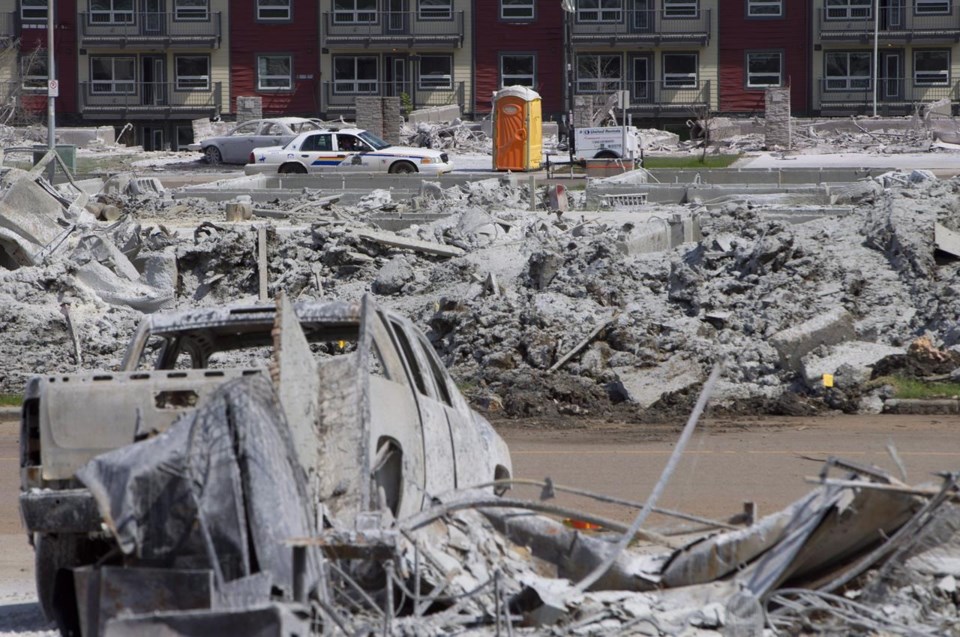A fierce wildfire burning outside Fort McMurray, Alta., has brought back memories of a vicious blaze, nicknamed The Beast, that tore through the oilsands hub in 2016.
Here’s a look at the differences between the two fires:
Crown fire versus land fire
The most significant difference between the two wildfires is what parts of trees are burning.
Jody Butz, the fire chief in charge of the Rural Municipality of Wood Buffalo, describes the 2016 fire as a big raging crown fire, while the current blaze is on the ground in the path of the former blaze.
“The dead and the downed trees are now intertangled on the ground and just opened up the canopy and allowed for dried cured grass to grow," he says.
John Gradek, a faculty lecturer at McGill University, says crown fires burn in the tops of trees. Flames jump from tree to tree along the peaks at a high rate of speed.
When wildfires are on the ground, they move much more slowly, but have a lot more to burn, he says.
“It is a much more intense (fire), and there is a lot of material on the ground,” Gradek says.
Fighting the different fires
Crown and ground-based fires both pose challenges.
Butz says crews are well positioned, with 117 firefighters and 21 helicopters assigned to the current blaze. He says they were also setting up defensive lines.
While the heat from a land-based fire is more intense, Gradek says bulldozed fire breaks and the work of firefighters on the ground are effective.
“(Crown fires) jump these fire breaks in minutes, because they're airborne,” he says.
Crown fires also require an intense air battle, because flames often burn more than 15 metres above firefighters’ heads, Gradek adds.
Mathieu Bourbonnais, an assistant professor at the University of British Columbia, says fires on the surface can also be tricky for firefighters depending on what the environment is like. Previous wildfires can leave trees and shrubs on the ground that provide fuel for the new blaze.
"You can get really aggressive surface fires," Bourbonnais says.
Effect on the forest
Fires are a natural part of a forest’s life cycle, but ground-based blazes have a more significant effect on trees.
Gradek says fires on the ground burn the trees and their root systems, leaving them dead. It takes much longer for new growth in the forest to return.
Crown fires, however, burn tops of trees while trunks and roots remain alive, Gradek says. These fires can be repeated multiple times in the life of a forest.
Gradek says because the 2016 fire spread through the tops of trees, there was a lot of material on the forest floor to burn this year.
This report by The 91ԭ�� Press was first published May 15, 2024.
Kelly Geraldine Malone, The 91ԭ�� Press


